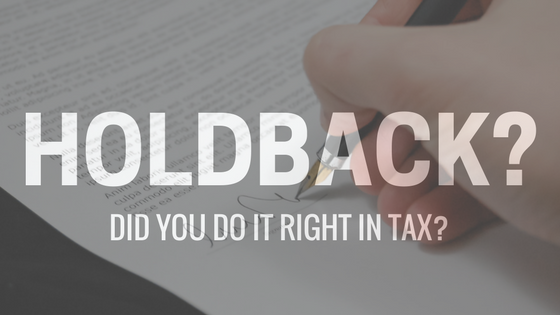In the construction business, a holdback is common.It works like this: the customers keeps part of the payment when they are satisfied with the quality and completion of the project based on the agreement.
What are the tax implications for home builders/contractors?
Canadian tax are complex. The implications for HST/GST and income tax are as follows:
Regarding HST implication,the GST/HST on the amount of the holdback becomes collectible on the earlier of:
-
the day the purchaser pays you the amount of the holdback
-
the day the holdback period expires
The GST/HST is collectible by builders/contractors on the earlier of the above dates even if you already issued an invoice for the holdback amount and charged the GST/HST on this amount. I’ve seen some contractors remitted HST on the holdback unnecessarily due to incorrect holdback journal entries. There are ways to deal with this issue in Quickbooks. We can explain this in the future.
How about income tax implication?
If there are any holdbacks recorded on the receivable , and the lien period has not expired, those receivables can be excluded from income from income tax purpose.
The related payables must also be excluded from the expense. You may question why both receivable and payable related to holdbacks. In Ontario,according to the Construction Lien Act, a lien on the the interest of the owner exists in the premises for the price of those materials or services. The Act requires every “Payer” to retain a holdback until the lien is expired.(“payer” means the owner, contractor or subcontractor who is liable to pay for the materials or services supplied to an improvement under a contract or subcontract) That’s why, in some cases, like say 10% holdback not being properly recorded as holdback,you know what happened, the 10% is being recognized as realized revenue as opposed to holdback should reduce revenue, home builders/contractors may come to a cash flow issue when it comes to HST remittance.Well, if the holdback not properly accounted for, the income for tax purpose may be inflated. Do you want to see that?
For those contracts less than 2 years, according to the CRA, contractors have the option of using the “completion method,” for income for tax purposes. When using the “completion method,” the holdback should not be a concern because revenue is not recognized for tax purposes prior to the contract’s completion. The holdbacks become taxable when the project’s completed and satisfied customers.
What if percentage completion method is used? The income is recognized/becomes taxable based on the progress of the project. Obviously, if holdback income has not been released or the purchase is not satisfied, then it should be not recognized.
Building houses/running projects is complicated enough, but the compliance makes it even more complicated. Are you looking for solutions? Give us a call.

Recent Comments